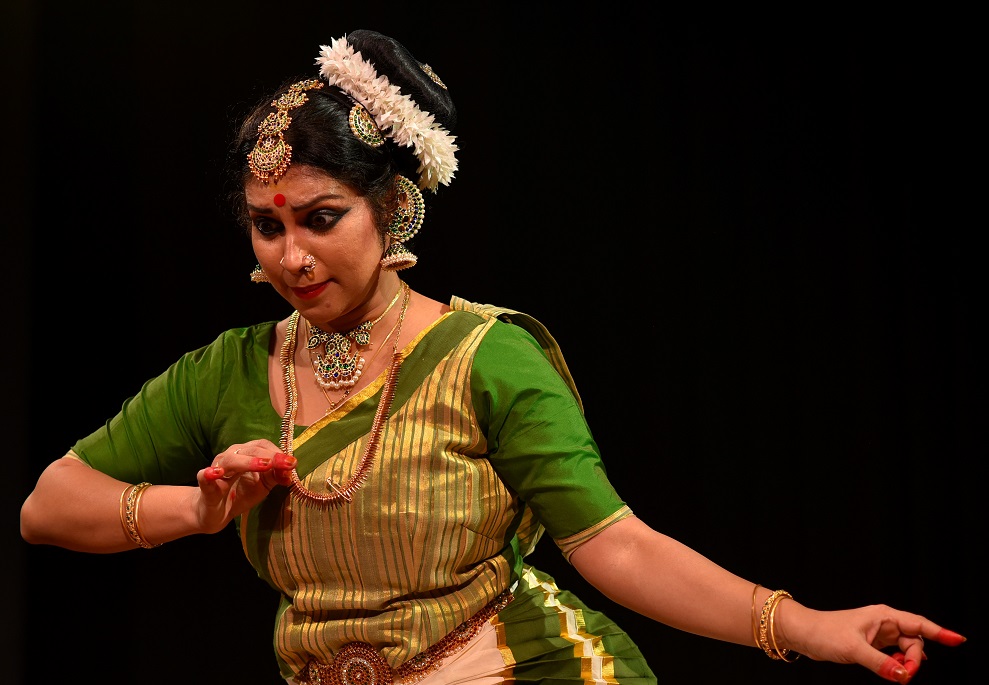Shlokams evoke devotion, dancers transform in Ananda rasa, merging with chosen deities, embodying essence.
Traditional Mohiniyattam repertoire comprises five types of dance items – Cholkkettu, Jathiswaram, Varnam, Padam and Tillana as we discussed in the last several weeks. This repertoire has been followed by Guru-s of Kalamandalam in training the Mohiniyattam students there.
Another Mohiniyattam repertoire revived by Kalamandalam Kalyani Kuttiyamma embellished the Kalamandalam repertoire with additional two items – Shlokam and Saptam. Shlokams are verses from texts like Bhagavad Gita, Upanishads, Puranas or other spiritual works. The focus is mostlyon Abhinaya and dancers often choose verses that offer plenty of opportunity or abhinaya – for example the Navarasa Shloka of Soundarya Lahari offers the opportunity to enact all 9 emotions in a shloka performance.
Devotion to the deity
The bhava of presentation of Shlokams are mostly bhakti and related emotions. Nritha is minimal and the music is not often set to any rhythmic patterns. This is to facilitate freedom in abhinaya. Characterized by short four or eight verses / lines, Shlokas speak of profound knowledge in a concise manner. Shlokams embody Bhakti, the narthaki / dancer emerges from the Thillana having transformed themselves in Ananda rasa. While culturing the door ways of the Shlokam, the dancer has become the very embodiment of ananda, and experiences the bless of Bhakti outside the realms of classicism. The dancer invokes and praises their ‘Ishata Devata’ or deity of choice and merges with that divinity. This union is the very essence of the Shlokam. An entire Mohiniyattam merger is distilled into a poignantly beautiful form that encapsulates and culture entire universe in its diminutive structure.
Assisted by Sreekanth Janardhanan
Photo Courtesy : Natanakairali Archives
Video Clipping : Mohiniyattam Artist: Bindu Rajendren

